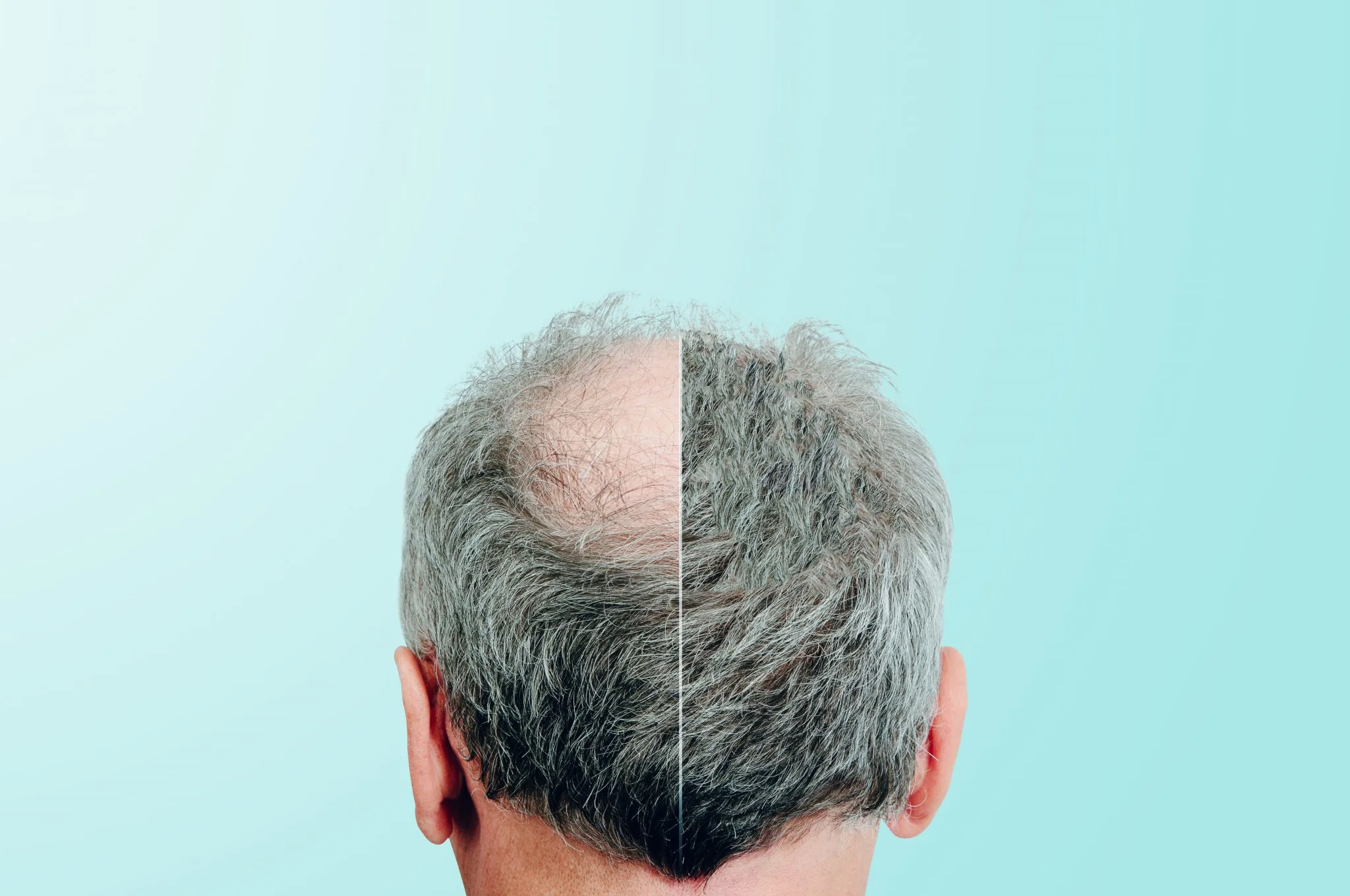Hair transplant procedures have demonstrably transformed the lives of millions, restoring confidence and natural hair density. The success rates of initial procedures are remarkably high, with studies consistently reporting over 95% graft survival when performed by experienced professionals. However, a significant portion of patients, approximately 10-15% according to recent clinical data, eventually consider a 2nd hair transplant. This decision often arises from further hair loss in untreated areas or a desire for increased density in previously transplanted regions. While the initial procedure sets a strong foundation, the evolving nature of male pattern baldness necessitates a comprehensive understanding of subsequent interventions. The efficacy and safety of second hair transplant procedures are well-documented, provided that patient selection and surgical planning are meticulously executed.
Table of Contents
Second Hair Transplant: Are You Ready and Is It Right for You?
Multiple hair surgeries have become increasingly common as patients seek enhanced follicular density and coverage. The waiting period for second hair transplant procedures requires careful consideration of both medical and aesthetic factors. Understanding when can i get a second hair transplant is crucial for optimal outcomes.
Key Timing and Safety Considerations
The time between hair transplants typically ranges from 12 to 18 months, allowing complete healing and growth assessment. Several critical factors determine readiness:
- Donor area recovery: Sufficient healing time prevents compromising existing grafts
- Growth evaluation: Final results become apparent after 12-15 months
- Scalp condition: Healthy tissue ensures proper graft survival
- Follicular assessment: Adequate donor reserves must remain available
Can a second hair transplant damage the first procedure? When performed prematurely, yes. Inadequate healing time increases risks of shock loss and reduced graft survival rates. The 2nd hair transplant timeline depends entirely on individual healing patterns and initial procedure outcomes.
Candidate Suitability Factors
Determining should i get a second hair transplant involves comprehensive evaluation of specific criteria:
- Progressive hair loss: Continued recession beyond initial treatment areas
- Donor density: Sufficient follicular units for additional extraction
- Realistic expectations: Understanding achievable density improvements
- Financial readiness: Secondary procedures require significant investment
- Medical clearance: Overall health status supports additional surgery
How long to wait for second hair transplant depends on these individual factors. Patients with excellent donor reserves and stable loss patterns typically qualify earlier than those with aggressive androgenetic alopecia.
Reasons and Risk Assessment
The following table summarises primary motivations and associated considerations:
| Reason | Risk Level | Success Rate |
|---|---|---|
| Increased density | Low | 85-90% |
| Crown coverage | Moderate | 80-85% |
| Hairline refinement | Low | 90-95% |
| Scar revision | Moderate | 75-80% |
Reasons for second hair transplant most commonly include inadequate initial coverage, progressive hair loss, or aesthetic refinement desires. When is the best time for a second hair transplant becomes clear once growth plateaus and future loss patterns stabilise.
Is second hair transplant possible depends on donor availability and recipient site condition. Advanced techniques like FUE allow multiple procedures when sufficient follicular reserves exist. However, each subsequent surgery reduces available donor tissue, making timing decisions increasingly critical for long-term aesthetic goals. According to Hair Transplant Care Guidelines, planning a 2nd hair transplant requires careful evaluation of the remaining donor supply. This ensures that future aesthetic aspirations can be met without compromising the overall appearance.
Understanding Donor Area Management for Second Transplants
Donor area assessment represents the fundamental cornerstone of successful second hair transplant procedures. The donor area after 2nd hair transplant requires meticulous evaluation to determine available follicular units for subsequent procedures. Experienced surgeons recognise that the occipital region typically provides approximately 6,000 to 8,000 extractable grafts throughout a patient’s lifetime, with careful distribution across multiple sessions ensuring optimal outcomes.
Key considerations for donor area management include:
- Follicular density evaluation through dermoscopic examination
- Scar tissue assessment from previous extractions
- Scalp elasticity testing to determine healing capacity
- Hair caliber measurement for graft quality analysis
- Donor area mapping to identify optimal extraction zones
The donor hair for second transplant procedures faces specific limitations based on previous extraction patterns. Regeneration capacity varies significantly between individuals, with most patients experiencing 20-30% follicular recovery within the previously harvested areas over 12-18 months. This natural regeneration process allows for strategic re-harvesting whilst maintaining donor area integrity.
| Transplant Number | Maximum Extractable Grafts | Recovery Period | Success Rate |
|---|---|---|---|
| First Procedure | 3,000-4,000 grafts | 8-12 months | 95-98% |
| Second Procedure | 2,000-3,000 grafts | 10-14 months | 90-95% |
| Third Procedure | 1,500-2,500 grafts | 12-16 months | 85-90% |
How many hair transplants can a person have depends primarily on donor area reserves and individual healing characteristics. Most patients accommodate 2-3 procedures effectively, with exceptional cases supporting up to 4 transplants when adequate donor reserves exist. The 2nd hair transplant donor area requires strategic planning to preserve sufficient follicular units for potential future procedures.
Advanced extraction techniques including rotational harvesting and body hair transplantation expand donor possibilities for subsequent procedures. Beard-to-scalp transplantation provides additional 1,000-2,000 grafts when scalp donor areas reach depletion. Chest hair extraction offers further supplementation, though with different growth characteristics requiring careful integration planning.
Donor area preservation strategies focus on maintaining optimal graft-to-area ratios whilst avoiding over-harvesting. Scarring minimisation protocols through precise extraction patterns ensure continued viability for future procedures. Post-procedural care regimens incorporating platelet-rich plasma therapy and low-level laser therapyenhance healing responses and follicular regeneration capacity.
What Density and Results Can You Achieve with a Second Hair Transplant?
Second hair transplant procedures deliver significant density improvements and aesthetic enhancements when performed by skilled surgeons. These secondary procedures typically achieve 60-80% density increase in previously treated areas, with optimal results visible 12-18 months post-surgery.
Density Improvements with FUE Technique in Second Transplants
- Advanced FUE methodology enables precise graft placement between existing follicles, achieving 40-60 grafts per square centimetre in secondary procedures
- 2nd FUE hair transplant sessions typically utilise 1,500-3,000 grafts depending on the treatment area and desired density levels
- Follicular unit extraction in second procedures requires enhanced technical precision to avoid damaging previously transplanted follicles
- Second hair transplant density improvements reach 85-95% natural coverage when combined with initial transplant results
- Strategic angulation techniques ensure seamless integration with existing hair growth patterns and natural directionality
Crown Area Treatment in Second Procedures
- 2nd hair transplant for crown areas requires 2,000-2,500 grafts to achieve comprehensive coverage and natural density
- Crown restoration in secondary procedures focuses on filling gaps and creating uniform hair distribution patterns
- Second hair transplant for crown treatment addresses progressive hair loss that occurred after initial procedures
- Whorl pattern reconstruction demands specialised placement techniques to maintain authentic crown appearance and growth direction
- Dense packing methodology achieves 50-55 grafts per square centimetre in crown areas during secondary treatments
Hairline Adjustments in Second Hair Transplants
- 2nd hair transplant to lower hairline procedures utilise 800-1,200 grafts for natural frontal enhancement
- Hairline refinement addresses irregularities and asymmetries from previous transplant procedures through precise graft placement
- Natural hairline design incorporates single-hair grafts in the anterior border with multi-hair units behind for optimal density
- Temporal point reconstruction enhances facial framing and creates youthful hairline contours through strategic follicle positioning
First vs. Second Transplant: Density and Coverage Comparison
| Aspect | 1st vs 2nd Hair Transplant Comparison | Second Procedure Advantages |
|---|---|---|
| Graft Count | 2,000-4,000 grafts | 1,500-3,000 targeted grafts |
| Density Achievement | 35-45 grafts/cm² | 40-60 grafts/cm² |
| Coverage Area | Primary balding zones | Refinement and enhancement |
| Results Timeline | 12-15 months | 10-12 months |
Second hair transplant results demonstrate superior density levels compared to initial procedures. 2nd hair transplant results before and after comparisons reveal dramatic improvements in overall coverage and natural appearance, with 2nd time hair transplant patients achieving their desired aesthetic goals through strategic enhancement techniques.
Recovery Process After Your Second Hair Transplant
The recovery time for second hair transplant procedures typically follows a similar timeline to initial procedures, spanning approximately 10-14 days for initial healing and up to 12 months for complete results. However, our clinical experience demonstrates that patients often experience slightly extended healing periods due to reduced scalp elasticity and previous surgical alterations to the donor area.
During the first 72 hours post-surgery, patients experience the most critical phase of recovery. The transplanted follicles begin establishing their blood supply, whilst the scalp adapts to the new grafts. Swelling and mild discomfort are expected during this period, particularly around the forehead and temples.
Post-operative care following your second procedure requires meticulous attention to several key areas:
- Gentle washing with prescribed solutions beginning 48 hours after surgery
- Avoiding direct sunlight and physical activities for the first week
- Sleeping with elevated head position to minimise swelling
- Following antibiotic protocols to prevent infection
- Refraining from touching or scratching the transplanted areas
- Avoiding alcohol and smoking for at least two weeks
The shock loss phenomenon may occur between weeks 2-8, where both existing and newly transplanted hairs temporarily shed. This process is particularly common in second procedures, affecting approximately 30-40% of patients according to contemporary surgical data.
Scab formation typically resolves within 7-10 days, revealing the healing scalp beneath. The recovery time for second hair transplant procedures may extend slightly due to compromised blood circulation in previously operated areas, requiring enhanced post-operative monitoring.
New hair growth commences around month three, with significant density improvements becoming apparent between months 6-9. Full maturation of results occurs at the 12-month mark, when final assessment of density and coverage can be accurately evaluated.
The healing process benefits significantly from patient compliance with post-operative instructions. Our extensive clinical observations confirm that patients who meticulously follow recovery protocols achieve superior outcomes, with reduced complications and enhanced graft survival rates throughout the extended healing timeline.



